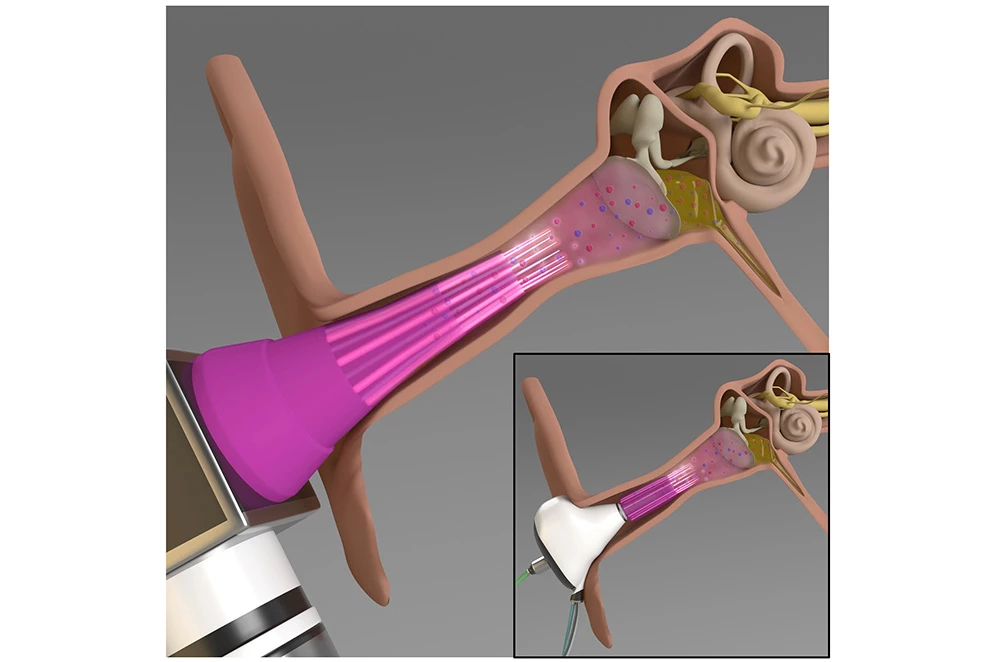Bacterial infections of the middle ear are quite common, particularly in children, yet they can be difficult to treat. An experimental new device has been designed to help, by zapping the bacteria with plasma.
Usually, such infections are treated with topically applied antibiotics. According to the University of Illinois at Urbana-Champaign, however, such an approach is ineffective in over 30 percent of acute infections. This is because the antibiotics have trouble penetrating the bacterial biofilm that has formed on the surface of the inner ear tissue.
Additionally, the greater the amount of antibiotics that are used, the greater the chances that the bacteria will develop a tolerance to them over time. With these limitations in mind, U Illinois scientists set out to develop an alternative treatment, or at least one that would allow smaller amounts of antibiotics to be more effective.
To that end, the researchers created an otoscope-type device known as a microplasma jet array. As its name implies, the 3D-printed prototype emits tiny jets of plasma – in this particular case, the plasma is made up of reactive molecules and charged particles that were previously shown to be effective at eradicating pathogens.
The device was tested by being inserted into a physical model of a middle ear, which incorporated an excised rat eardrum along with a biofilm of infection-causing Pseudomonas aeruginosa bacteria. It was found that after 15 minutes of microplasma treatment, most of the microbes had been killed off, yet the delicate eardrum remained undamaged. In practise, if some of the bacteria did remain unharmed, a relatively small amount of antibiotics would be required to kill them.
"We think that the microplasma disrupts the biofilm by disturbing the bacterial cell membrane," says Prof. Helen Nguyen. "So far, we only have indirect measurements supporting our idea, but we will look into it in the future."
The scientists are now working on a less obtrusive earbud-like version of the device, and are also investigating the effectiveness of the treatment on other infection-causing bacteria such as Haemophilus influenzae, Streptococcus pneumoniae and Moraxella catarrhalis.
A paper on the research was recently published in the journal npj Biofilms and Microbiomes.
Source: University of Illinois




